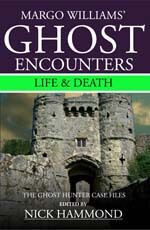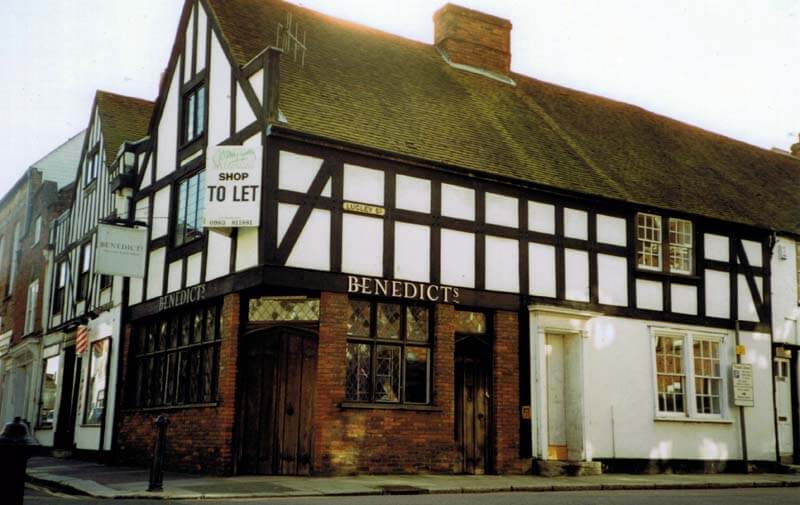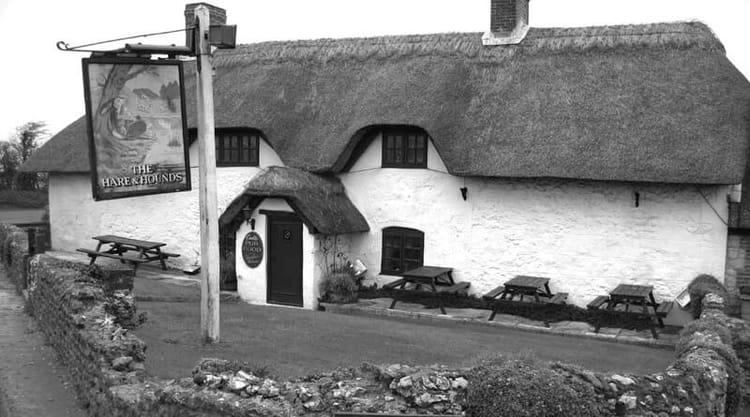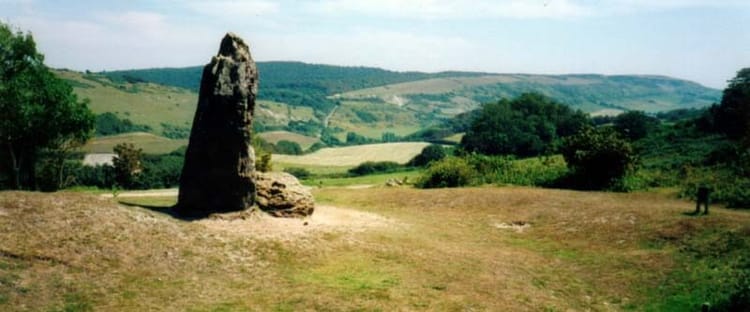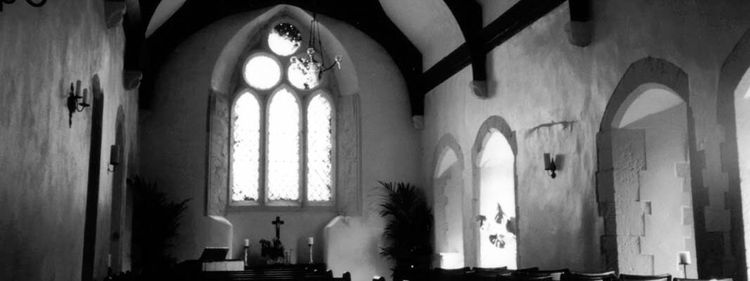The Belgae. Unsolved Mysteries Isle of Wight
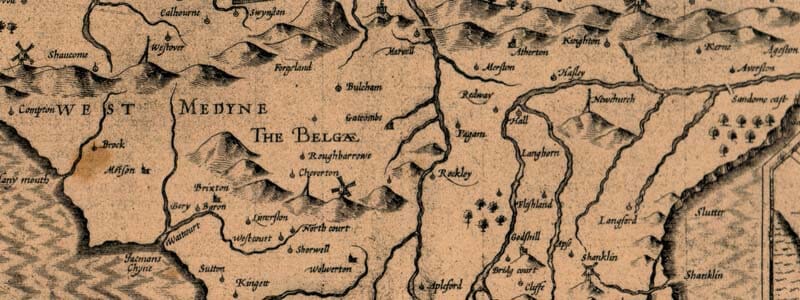
The Brighstone Triangle
Lost from modern maps is an old reference to an Isle of Wight region known as 'the Belgae' - land south west from Carisbrooke between the villages of Gatcombe, Shorwell and Brighstone.
"The Belgae" were a tribe of settlers who came to the British islands about 50BC, but the presence of the mound barrows up on the ridge, plus the dolmen burial chamber in nearby Strawberry Lane, suggests this area was populated way back into prehistory. To a time when the great pyramids of Egypt were under construction.
This area contains some of the Isle of Wight's oldest houses and families.
No ghost hunter can confirm if Wolverton, Northcourt and Westcourt manors are haunted because these properties are not opened up to investigators. Many other island manors are confirmed so it is a fair assumption, these too have supernatural sitting tenants.
Does every old house have a ghost? Probably yes.
Who First Believed in Ghosts and Gods?
No one knows why the first Brighstone resident believed in ghosts. It is an assumption that countless testimonials of ghostly encounters exist in the modern period. So chances are they probably happened in prehistoric times too.
There's no first date on record when a ghost appeared to a witness. So, either they suffered hallucination, as said of modern witnesses. Or what they saw was a ghost.

No one knows what hunter-gathering age flint-workers on the Isle of Wight believed happened to their fallen friends and beloved deceased. As people settled and grew crops for food, permanent stone structures were built to accommodate the dead.
The only surviving example on the Isle of Wight is the nearby Longstone; all that remains of a dolmen burial chamber.
Barrow mounds punctuate the downland skyline above. Few artefacts have been recovered and so treasure-hunters wonder if wooden platforms stood upon them exposing the deceased for cleansing. Weather-stripped bones were interred inside the Longstone dolmen.
Archaeological work in better preserved Neolithic mortuary enclosures reveals care in burial rites; indications of removal and replacement of particular bones, such as skulls, suggests movement may have been part of ritual connection.
Some form of religious belief system - personality survival - indicated by the inclusion of items with the dead.

Isle of Wight Celts
Anthropology identified two groups dominant in Europe: Lowland Celts and Mountain Celts.
Lowland Celts originated in the lands around the Danube and migrated across Gaul (modern France) and the British islands around 1200 B.C. Says Celtic mythbuster T.W. Rolleston:
'..These were founders of the lake-dwellings in Switzerland and Danube Valley and in Ireland. They knew the use of metals and worked in gold, tin, bronze and towards the end of their period in iron.'
This group is described as peaceful agriculturists and pastural people who migrated to Britain and found already living here, "...A people with a powerful priesthood, ritual and imposing religious monuments; people steeped in magic and mysticism.'
There is little evidence of defensive earthwork engineering during this period, it may be that an aura of mystical invincibility enshrouded the British Isles.
Who were these people?
The Belgae
According to Caesar, the Belgae, a Celtic tribe invaded the southern coasts of England, subdued Hampshire and colonized the Isle of Wight about 85 years BC.
These brought a new technology in metal weapon - iron swords. Not cast and brittle like bronze, but forged, hammered hard and sharp.

Unlike the lowland Celts, these migrated from the mountain ranges of the Balkans and Carpathians, says Rolleston. 'Their organisation was that of a military aristocracy. These are the warlike Celts of ancient history.
They hated agriculture and industry, their women tilled the ground and under their rule the common population became reduced almost to servitude.'
Lowland Celts built their villages in valleys, this new group were responsible for the hill-top fortresses which crown so many high and defensible positions. In much the same way later Normans built strong keeps to intimidate their conquered neighbours, the Belgae ruled from high.
Remains of pre-Belgae community were found in the mid 1800s.
The Gallibury Village
North of Shorwell, off the road to Newport the remains of an ancient village were discovered in Gallibury and Rowborough.
Adams who mapped and excavated the area concluded there were two villages, divided by natural boundaries, though connected. Nearly in a row:
'They resemble many in the neighbourhood of Whitby, Pit Steads in Derbyshire. But at Gallibury and Rowborough there are none of the double rows which may perhaps be accounted for by the character of the ground – a narrow valley, which renders the single row more convenient.’
The word Gallibury is thought to mean "village of the Galli, the name of the former Celtic inhabitants.
Adams continued:
'These ancient inhabitants of the Shorwell area, as elsewhere in Britain, dwelt in circular excavations in the ground, roofed with branches of trees cased over with turf or straw, having a side opening which served the triple purpose of door, window and chimney. The middle of the pit was the usual place for the fire, round which heath or grass was spread for seats and beds.'

British Village Excavation Data: Gallibury
The dwelling pits at Gallibury are generally farther apart than those in Yorkshire; their diameter varying from 15 feet by 15 feet (4.572 m), to 55 (16.764 m) feet by 46 (14.021 m).
Central depth varies from one (30.4 mm) to seven feet (2.133 m); the average about three feet (914.4 mm).
There are sixty such pits forming this village. Some of these pits are bowl shaped, the majority oval, whilst a few seem to be double or larger sized pits.
Reaching the head of Gallibury, and ascending Rowborough Down which separates it from Rowborough Bottom, to the south, on the summit Adams and his team discovered artificial ridges; possibly remains of enclosures for cattle: or, with other ridges depicted on the map, outworks for defences.
'The pit at the head of Bunkers seems to have been formed as receptacle for the water from the three surrounding hills. It has the remains of a bank, with an opening in it on the north-west for the entrance of the water. It has flint stones around its edges. This pond was formed obviously for the same purpose as that supplied by a spring at the head of the adjoining valley.'
Snapshot of Isle of Wighters when the Romans Arrived
By BC 50 these three groups of peoples blurred into one name of 'Celt' and a priestly caste Druid. A combination which forged a vast empire extending from Ireland across Europe; powerful as Rome's.
Civil engineers, metallurgists and warriors, taught by a priestly caste who knew of astronomy, could talk of it as if magic, and believed the soul did not perish with mere death.
This is the earliest reference to widespread organised religion. The British islands were its administrative and spiritual centre, so Roman general Julius Caesar noted. Surprisingly we know little about their beliefs. Why?
Exploring the haunted Isle of Wight
Druids did not commit their teachings and beliefs to text, only memory. But knew how to write, used Greek characters for communication.
In pre-Roman times, the Brighstone community probably followed their Druids' teachings and believed in an afterlife described by the Celts of Ireland. Or a system based on the ancient civilisations of Egypt and Ur.
Or the Olympian Gods described by Greek poets Hesiod and Homer.
Thank you for your company on this short tour of Isle of Wight mysteries and haunting. If you would like to know more about Margo Williams' investigations in Brighstone and other matters of life and death, read this book. Now available from Amazon.
